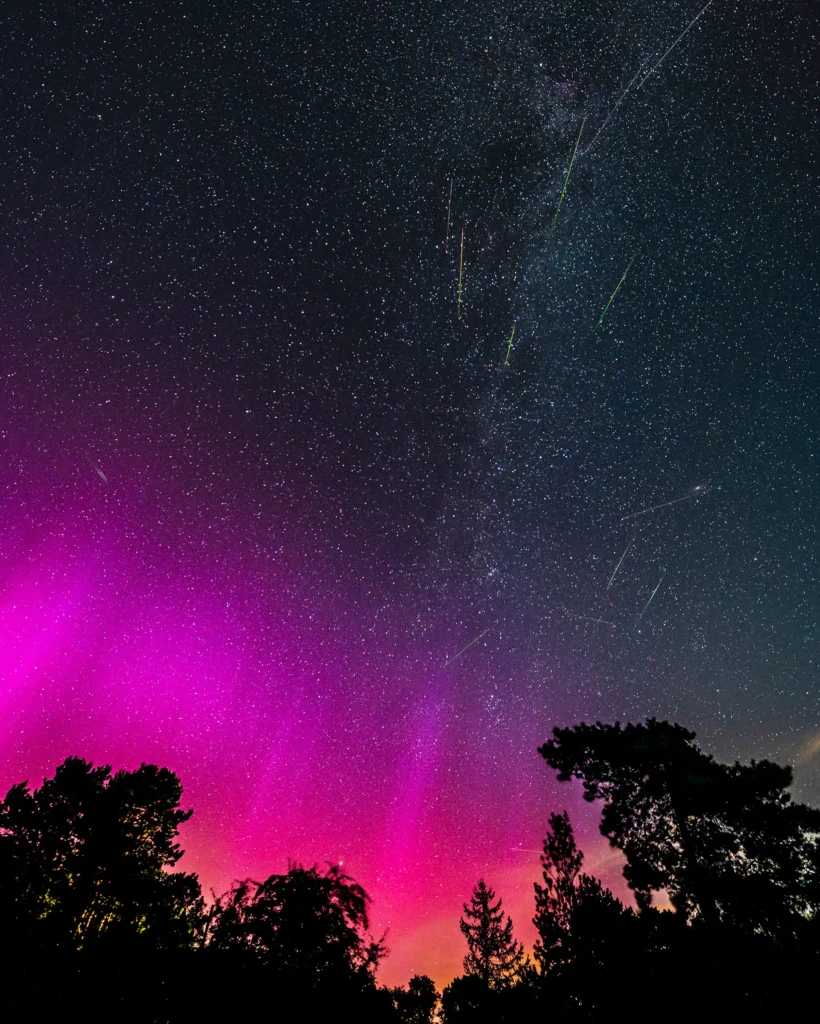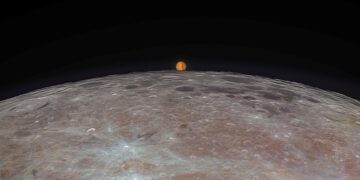The night sky in 2025 promises an array of breathtaking celestial phenomena, from parades of planets to the mesmerizing glow of a supermoon. Each event offers not just a visual spectacle but also an opportunity to deepen our understanding of the universe and connect with the cosmos.
The Planet Parade: A Cosmic Ballet
The year kicks off with a rare planetary alignment, delighting stargazers in January and February. Venus, Saturn, Jupiter, and Mars will grace the evening sky, forming a dazzling arc visible to the naked eye. By late February, Mercury joins the lineup, albeit briefly, adding an elusive charm to this celestial gathering.
This planetary parade is not merely a spectacle; it underscores the intricate mechanics of our solar system. The visibility of these planets at varying brightness levels illustrates their distances from Earth and their reflective properties.
For the best viewing experience, head to a location with minimal light pollution. Look southwest for Venus and Saturn and southeast for Jupiter and Mars. These alignments serve as reminders of the vastness and precision of our cosmic neighborhood.
Lunar Occultation of Mars: A Rare Encounter
On January 13, the moon will pass directly in front of Mars, an event known as a lunar occultation. This phenomenon is a unique twist on the more familiar solar eclipse and offers a stunning display as the moon temporarily hides the red planet from view.
The occultation will be visible across most of the United States, with exact timings varying by location. In Cincinnati, for instance, the event will unfold between 9:06 p.m. and 10:17 p.m.
Total Lunar Eclipse: The Blood Moon Returns

On the night of March 13-14, a total lunar eclipse will grace the skies, bathing the moon in an eerie orange-red glow. This “blood moon” effect occurs as Earth’s shadow completely covers the moon, with sunlight refracting through our atmosphere to create the reddish hue.
The eclipse begins at 1:09 a.m. Eastern Time, with totality lasting from 2:26 a.m. to 3:31 a.m. This event is the only total lunar eclipse visible in the U.S. in 2025, making it a must-see for skywatchers.
Meteor Showers: Fireworks in the Sky

Two major meteor showers bookend the year’s celestial calendar: the Lyrid Meteor Shower in April and the Orionids in October.
The Lyrids, peaking on April 22-23, originate from the debris of Comet Thatcher. They are known for their bright, fast meteors and occasional fireballs. Observers can expect 10-20 meteors per hour radiating from the constellation Lyra.
The Orionid Meteor Shower, peaking on October 21-22, comes from Halley’s Comet. This year’s nearly invisible moon ensures darker skies, perfect for viewing the 15-25 meteors per hour expected.
The November Supermoon: Nature’s Spotlight
On November 5, the largest and closest full moon of the year, known as a supermoon, will dominate the night sky. Its enhanced size and brightness make it a favorite among photographers and sky enthusiasts alike.
A supermoon occurs when the moon’s orbit brings it closest to Earth, a point called perigee, coinciding with its full phase. This alignment accentuates the moon’s appearance, making it seem larger and brighter than usual.
Preparing for 2025’s Astronomical Events
To make the most of these celestial wonders, plan ahead. Invest in a good pair of binoculars or a telescope, and find a location with minimal light pollution. Use apps and online resources to track the timing and visibility of each event in your area.
Whether you’re a seasoned astronomer or a curious beginner, 2025’s night sky has something for everyone. From the rare occultation of Mars to the dazzling supermoon, these events invite us to pause, look up, and marvel at the universe.
Conclusion
The year 2025 promises a celestial feast, blending beauty and science in equal measure. Each event, whether a planetary alignment or a lunar eclipse, is a testament to the intricate dance of our solar system. As you mark your calendar and prepare your telescopes, remember that these moments connect us to the cosmos and to each other, reminding us of the endless wonders above.



















